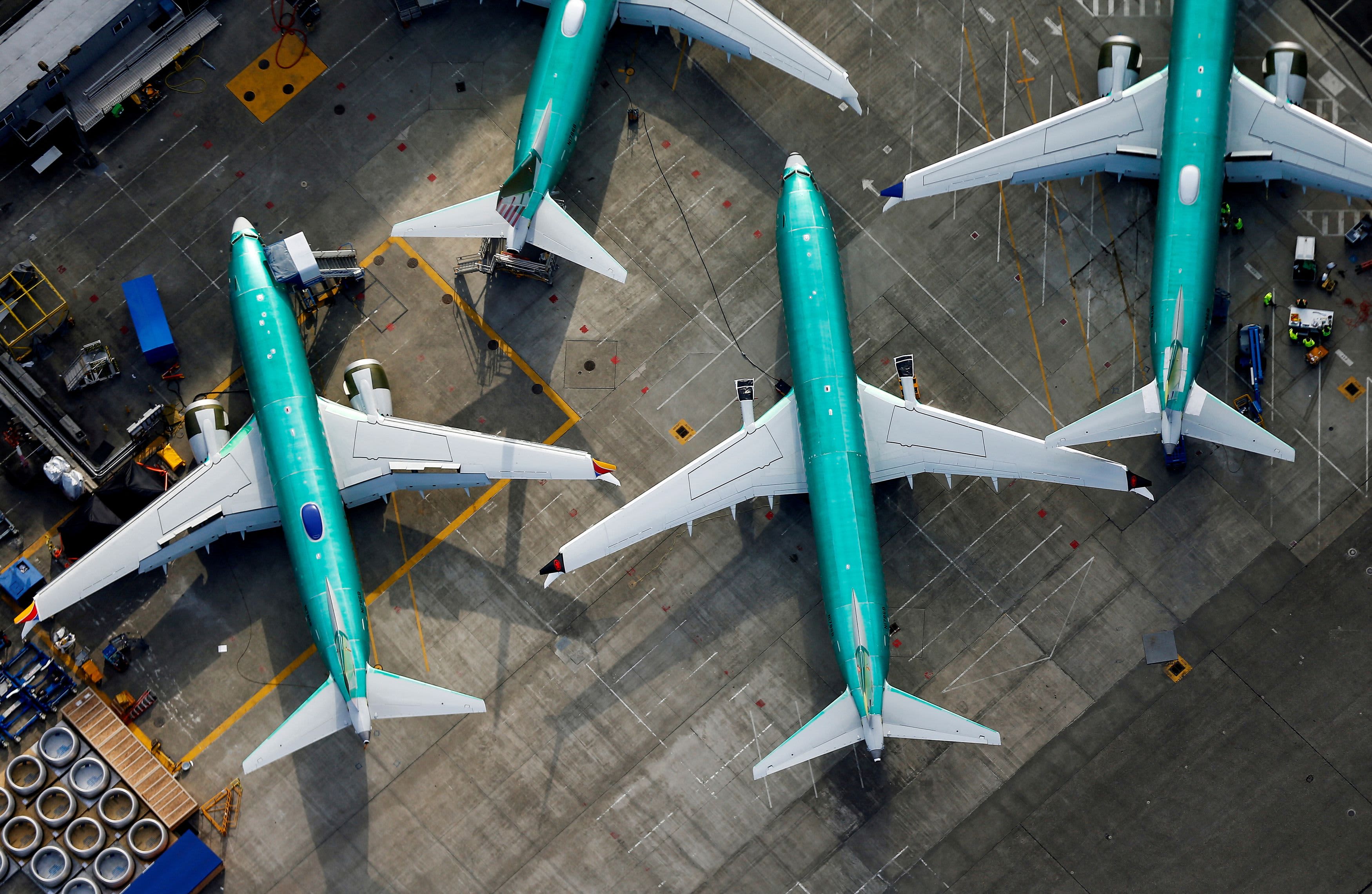- Boeing will not bring any commercial jets to the Singapore air show, shifting the spotlight on passenger jets to rival Airbus as well as China’s domestic offering.
- “Industry contacts we’re talking to believe that the problems at Boeing, specifically the 737 Max, present an early opportunity for Comac,” Northcoast Research analyst Chris Olin told CNBC.
- To be clear, Boeing will still demonstrate its defense capabilities and showcase many of its fighter jets, including the B-52 Stratofortress, which will participate in the US Air Force Air Show.
An aerial photo shows Boeing 737 MAX aircraft parked on the tarmac at the Boeing factory in Renton, Washington, U.S., March 21, 2019.
Lindsay Wasson | Reuters
SINGAPORE — Boeing will not bring any commercial jets to the Singapore Air Show, shifting the passenger jet spotlight to rival Airbus as well as China’s domestic offering.
It comes after Boeing reported a drop in aircraft orders and deliveries in January following an in-flight explosion of a fuselage panel on one of its 737 Max 9s earlier in the year.
While there will be aerial displays of Airbus commercial airliners and China’s domestic Comac C919 aircraft, Boeing will have no commercial aircraft at the air show.
To be clear, Boeing will still demonstrate its defense capabilities and showcase many of its fighter jets, including the B-52 Stratofortress, which will participate in the US Air Force Air Show.
While no commercial jets will be on display, Boeing will still hold a cockpit display of its 777X wide-body passenger jet, which the company claims is the world’s largest twin-engine plane. Deliveries of the aircraft, expected from 2025, have been delayed.
The Singapore Airshow, which runs from February 20 to 25, is usually attended by tens of thousands, including military delegations and aviation enthusiasts.
Among the participants in this year’s event are other aerospace and defense leaders, including Lockheed Martin, Dassault, SAAB, Leonardo, Thales.
It is the first major international aerospace event since last month’s explosion, which pushed Boeing into a new safety crisis after US safety regulators ordered the temporary grounding of more than 170 Boeing 737 Max 9 planes.
A door stopper exploded mid-air on an Alaska Airlines flight departing Portland, Ore., on Jan. 5, an incident that did not seriously injure passengers on board but left Boeing executives scrambling to regain the trust of the airline’s customers , investors and regulators.
China is also preparing to display and fly the C919 narrowbody commercial jet developed by the Commercial Aircraft Corporation of China, or Comac.
It will be one of the most anticipated aerial features of the biennial event, as it is the first time China will fly its own aircraft to an international audience.
Although the plane has only been certified by Chinese authorities, industry experts said it could be an early challenger to the commercial aviation duopoly between Boeing and Airbus.
“Industry contacts we’re talking to believe the problems at Boeing, specifically the 737 Max, present an early opportunity for Comac,” Northcoast Research analyst Chris Olin told CNBC.
According to Olin, the C919 could eventually bite into Boeing’s maximum market share, but noted that “the impact of the C919 will likely be muted over the next few years, with aircraft production expected to be limited to 75-100 aircraft per year.”
Although the Max crisis and supply chain disruptions loom large across the industry, analysts expect the impact on Boeing to last only in the short term.
“In terms of orders, 2023 was the best year for orders in Boeing’s commercial aircraft history and was particularly strong in December,” said Miles Walton, managing director of Wolfe Research, noting that, like Airbus, Boeing is expects to have higher deliveries during the year.
“Given Boeing’s lower starting level in 2023, their 2024 delivery growth rate is likely to be higher, although the amount of growth will be more similar,” Walton said.
— CNBC’s Leslie Josephs contributed to this story

